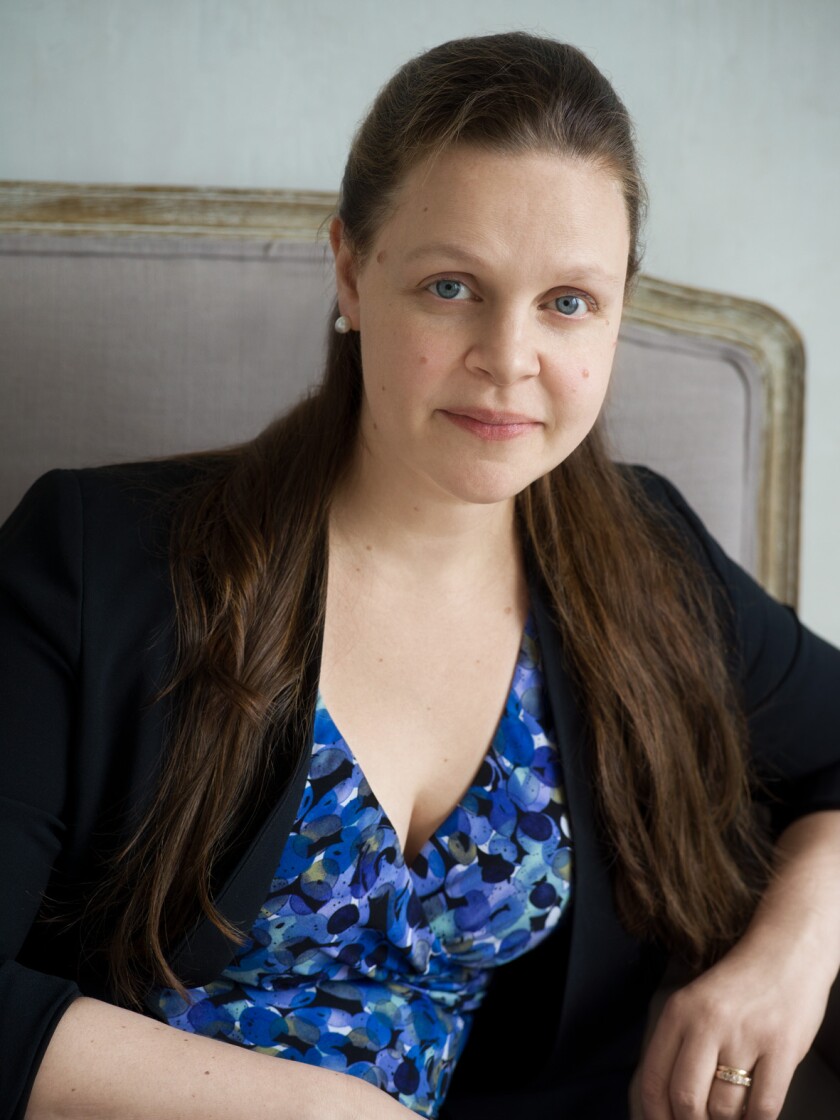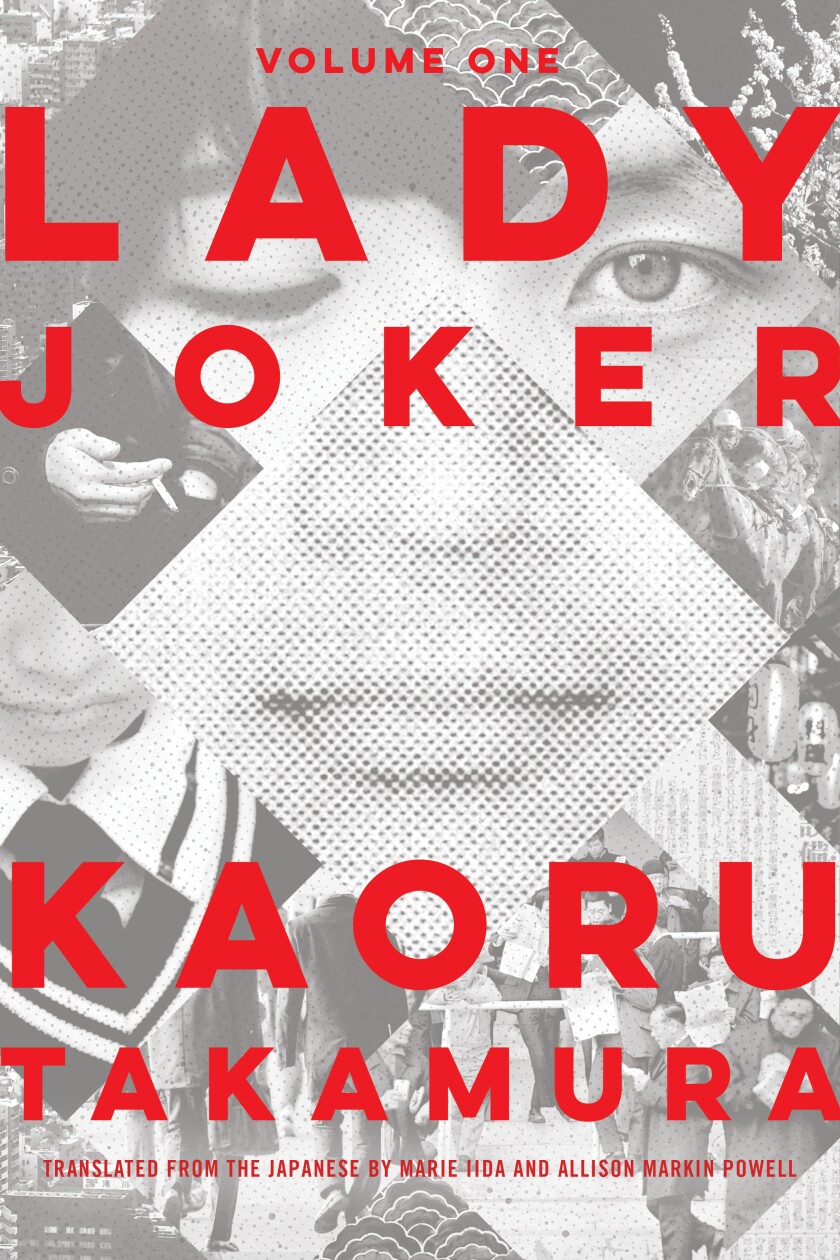On the Shelf
Lady Joker, Volume 1
By Kaoru Takamura
Soho Crime: 600 pages, $29
If you buy books linked on our site, The Times may earn a commission from Bookshop.org, whose fees support independent bookstores.
Imagine yourself, over a 30-year career, being considered a modern master of both crime and literary fiction. You’ve sold millions of copies, won every major mystery award, seen several books adapted for the screen and earned the sobriquet “Queen of Mysteries.” But here’s the catch: Your work has never been translated outside your home country.
That’s what happened to Kaoru Takamura, born in Osaka, Japan, who worked as a stock trader before turning to writing. Her celebrated mystery career culminated in 1997’s “Lady Joker,” a sweeping, nuanced trilogy whose plot kicks into gear in 1947 with a letter to the Hinode Beer Co. from a dismissed employee and takes a dramatic turn with the kidnapping, some five decades later, of the conglomerate’s chief executive. Based on the unsolved Glico-Morinaga case that terrorized Japan in the mid-1980s, the series’ uncompromising dissection of post-WWII Japan was a cultural sensation, sold more than a million copies there and garnered praise for Takamura’s astonishing “eye for detail and storytelling prowess.” But still, no translation.
Enter Juliet Grames, senior vice president and associate publisher at Soho Press. Since 2010, Grames has been editor of the press’ Soho Crime imprint, whose mandate is to publish atmospheric crime fiction from all over the world. A polymath editor and author in her own right, Grames curates a list including Britain’s Peter Lovesey, L.A.-based Ghanian American Kwei Quartey and the Paris-set mysteries of the Bay Area’s Cara Black. Grames’ particular interest in Japanese culture dates to her immersion in the language in Simsbury, Conn.’s public schools, followed by her study of the language at Columbia University.
“I knew I wanted to publish ‘Lady Joker’ as soon as I heard about it,” says Grames, who had already released Fuminori Nakamura’s crime fiction at Soho, including the 2012 novel “The Thief,” shortlisted for an L.A. Times Book Prize. “After reading the reviews, stories about its adaptation into both film and television as well as Takamura’s background, her advocacy, her stubbornness in presenting her unique vision in defiance of gender or genre expectations, I knew the ‘about line’” — the real-life backstory — “would appeal to not only to people looking for a good story, but something more.”

Juliet Grames of Soho Press leaped multiple hurdles to bring the Japanese sensation “Lady Joker” to American readers.
(Nina Subin)
Yet Grames knew even award-winning cultural touchstones are difficult to acquire from Japan. Among the barriers is a complicated net of author-publisher relationships peculiar to the country: Authors sell individual works to separate publishers, making it surpassingly difficult to acquire an author’s entire oeuvre. And since they rarely use agents, there’s no strategic partner to guide the process of minting an international career. So when Soho acquired world English rights to “Lady Joker” in 2014, it did so without the benefit of a translation or even sample materials.
The challenges didn’t end there. Grames had to determine the best translator for Takamura’s demanding magnum opus, which weighed in at the equivalent of some 400,000 English words and had a literary style and sweep that recalls maximalists like James Ellroy, Caleb Carr or even David Foster Wallace. She turned to Allison Markin Powell, the esteemed translator of several notable Japanese writers, including Nakamura’s novels for Soho Crime.
With her industry connections and advocacy for works in translation, Powell knew of the novel and the acquisition. “She’s like the CIA,” Grames says admiringly. “She knew almost before I did!” Cognizant of the book’s literary impact in Japan and Grames’ passion for the project, Powell asked for some time to consider how to approach the intricacies of the text. In addition to the usual challenges of translating Japanese, a tough language to parse with nuance, the trilogy’s wide-ranging subjects and social milieus would test any translator’s lexicon.
Powell came back a few weeks later with a novel approach — bringing on a second translator, Marie Iida. American-born and Los Angeles-based, the natively bilingual Iida is best known as the self-effacing interpreter who brought nuance to bestselling author Marie Kondo’s Emmy-nominated Netflix documentary series, “Tidying Up With Marie Kondo.”

Marie Iida, left, and Allison Markin Powell are the translators on Kaoru Takamura’s “Lady Joker, Volume 1.”
(Dennis Liu / from Allison Markin Powell )
Her team in place, Grames and her colleagues dedicated the next four years to a meticulous translation of Takamura’s text: Iida usually made the first pass and Powell the second, followed by a collaboration on refinements with Grames, whose work as a combination literary midwife and line editor was guided by her mission to “arrive at the most accurate, faithful and energetic English interpretation for each word and sentence.”
The next challenge: How to package the book for an American audience. Soho considered one 1,000-plus-page volume but abandoned the idea. “We also thought three books was a lot to ask readers to sign up for, year after year,” Grames explains. “And four is an unlucky number in Japanese culture.” So they settled on two.
Volume 1, released last week, demands a reader’s careful attention. Like Ellroy’s “American Tabloid” and Carr’s “The Alienist,” the book uses crime as a prism to examine dynamic periods of social history — a history that, in this case, most American readers didn’t live through or learn about in school. Takamura paints a broad landscape but also dives deep into every aspect of her story, lavishing attention on topics as varied as the details of performing a root canal and the entanglements of corporate Japan and organized crime. There are trenchant observations on Japan’s shameful treatment of ethnic minorities and those considered to be of lower caste. “Using the relationship between individuals and institutions as its axis,” one Japanese critic observes, “’Lady Joker’ attempts to depict the contemporary era in its entirety.”

(Soho Crime)
Even if a reader has never visited the country, reading “Lady Joker” is like being transported in a time machine to 20th century Japan, bracketed by commonly known events like postwar reconstruction and the Tokyo sarin gas attack of 1995. And though these incidents took place decades ago and thousands of miles away, Takamura’s blistering indictment of capitalism, corporate corruption and the alienation felt by characters on both sides of the law from institutions they once believed would protect them resonates surprisingly with American culture.
There’s a lot to digest in “Lady Joker,” but I finished Volume 1 feeling I got full value for my effort. So did Grames and her translators, who are completing the translation for Volume 2, which will be published in summer 2022. “My colleagues at Soho Press were very understanding,” she says with a laugh. But for Grames, publishing a writer she calls an “unrelenting world-builder” has been time well spent. “When Soho commissioned this challenging literary novel in translation,” she says, “we went into the venture imagining it would be a labor of love.”
Grames will measure the success of this expensive and long-gestating project not in units sold, but “by critical recognition and, if we’re lucky, awards consideration.” That said, “I’m thrilled to say that our first print run for ‘Lady Joker’ vastly exceeded any of our expectations. Based on the early demand we’ve seen among readers and gatekeepers alike, I am hopeful that it has the makings of a modern classic.”
Woods is a book critic, editor of anthologies and author of the Detective Charlotte Justice procedurals.






